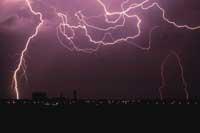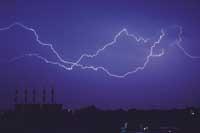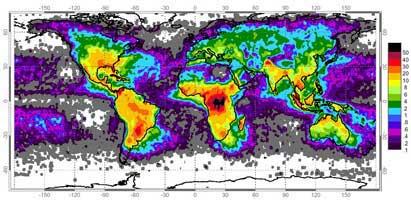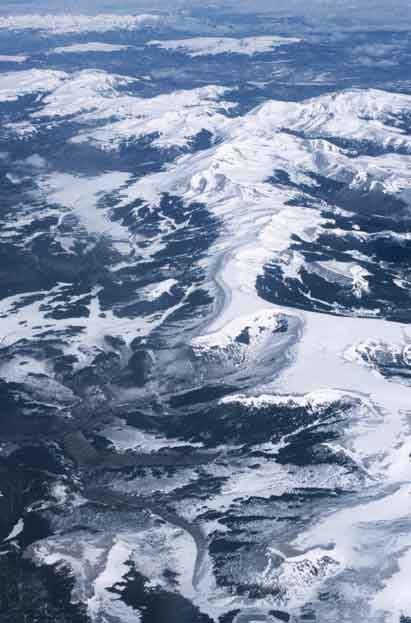NASA has just completed the Earth's ray map
2002/06/02 Mendiburu, Joana - Elhuyar Zientziaren Komunikazioa
When the lightning illuminates the dark night there is no room! Not at least for street walks! However, NASA researchers working on the world map of the electric shocks falling through the sky will have another opinion.

In the Basque Country, lightning strikes occur on the summer days when the air is very humid and the land surface is hot. But lightning times vary according to the hemisphere. In addition, orography and geography have much to do with ray formation. On the contrary, human influence is less than expected. All this is clear with an investigation conducted by NASA.
Ray distribution is the first time it is performed by latitude, altitude and seasons of the year. This new perspective has been achieved thanks to two detectors: Optical Transient Detector (OTD) and Lightening Imaging Sensor (LIS). The first was launched in April 1995 and has worked for five years. The second, which was launched in 1997 along with a satellite to measure rainfall in the tropics, is still in operation. However, the map has been completed with data collected until March 2000.
These detectors use high-speed cameras to detect changes occurring at the top of the clouds, which the human eye cannot observe, and have been able to obtain very accurate information.
Before the commissioning of these detectors, the rays were measured through radio frequencies from the ground, and although in small areas satisfactory results were obtained, the data were scarce in the oceans and sparsely populated regions.
The most attractive places in the world
The new map has highlighted the busiest areas. In the top positions are Florida, Himalaya and Central Africa.
According to atmospheric researcher Dennis Bioccipio, "Florida receives two sea breezes, one on the east coast and one on the west coast. The forces between these two sea breezes place the air in ascending movements and cause the rays. Within mists, turbulence produces ice crystals and small drops of water. For something still unclear, positive electric charges accumulate on smaller particles and negative charges on larger particles. Wind and gravity separate these loads from each other, generating great electrical potential within the storm.

Researchers claim that the reason there is a lot of lightning in the Himalayas is the high altitude. These rays are due to the topography raising the air of the Indian Ocean.
In Central Africa, lightning occurs throughout the year. These rays are due to the contact of air currents from the Atlantic Ocean with mountain ranges.
Information sent by satellites also provides information on the distribution of lightning throughout the year. In the southern hemisphere, for example, the summer months are the ones that produce the most rays and in the equatorial regions, in spring and autumn.
However, in the Arctic and Antarctic there are hardly any rays. In the oceans, activity is also low, according to researchers, because the sea surface is not as hot as the land surface. The rays are so scarce that some populations of the reflections have no words to express the ray in their tongue.
According to scientists who have carried out the research, human activities have no great influence on the distribution of rays. So far large buildings and large metal towers were considered to increase the number of rays leading to Earth, but according to these researchers, the rays make the way to Earth. Therefore, they say that the influence of the buildings is very small, although no experiments have been conducted to show it.
Published in the supplement Estación de Gara.

Gai honi buruzko eduki gehiago
Elhuyarrek garatutako teknologia






